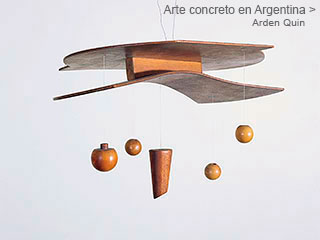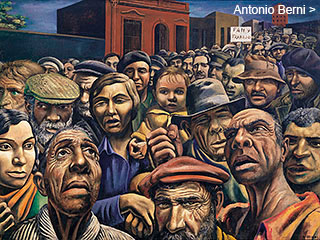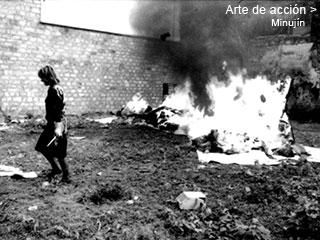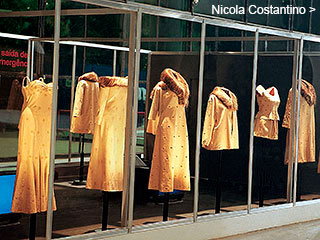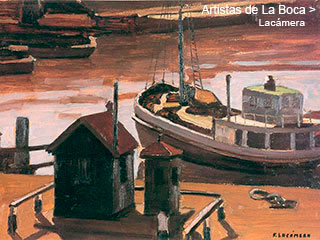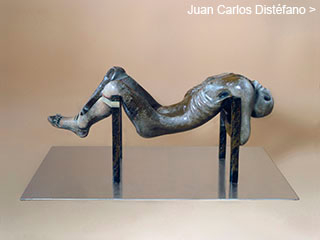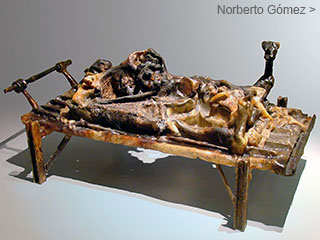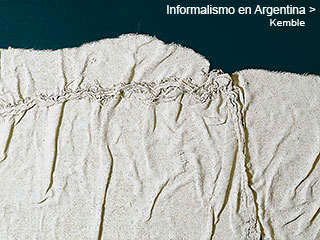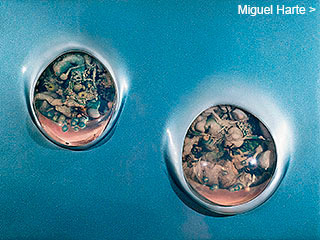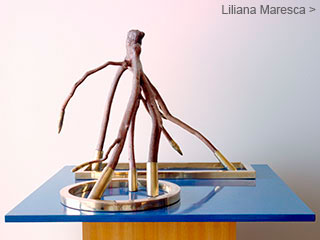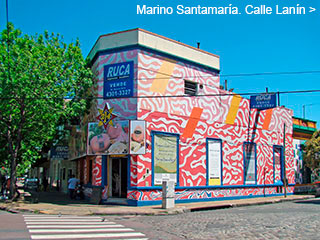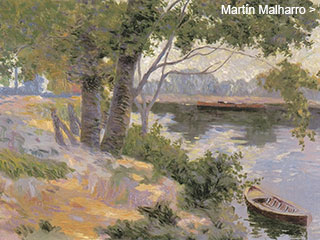Menú
Algunos dossiers
Informalism
in Argentina
in Argentina
by
Jorge López Anaya
August 2003
August 2003
Argentine Informalism incorporated processes which went against the “good taste” of the local practices. Based on the existential poetry of the time, through spontaneous gestures and the use of discarded material, it violated the limits of the traditional artistic genre and opened the road to the concept of the object, the installations and the art of action.
Greco
I believe that this is a position against the geometric form and that of the mental mathematic calculation as a structure of the future plastic piece. I have never been keen on geometry nor math. I definitely don’t understand them. They have never moved me. I do not deny their existence, but I believe in another kind of painting; in the vital painting, in the kind of painting that screams at you, in the great adventure of painting of which we can come out dead or hurt but never intact, something like entering a huge forest without pre-conceived ideas”. He later goes on: “More than a ‘painter’ of my own pictures, I consider myself ‘painted’ by them. They show my own savage nature, always tortured, same as beauty is. I paint because if not, I burst. I would burst perhaps due to so many walls, for so much invented incarceration. I want to do what I feel - that which comes out of me spontaneously”.
On October 1961, at his last exhibition in Buenos Aires which he entitled Las monjas (The Nuns), Greco presented some dramatic pieces of Informalist-Neofigurative conception. He represented nuns with their limbs ripped apart, made of disgusting material, with pieces of cloth glued on to the figures dressed in worn out stained shirts. He also exhibited five or six pieces of canvases; at the center of the room one of the nuns was represented with a shirt attached to a frame with horse-shoe nails. He had titled it: La monja asesinada (The murdered nun).
more


